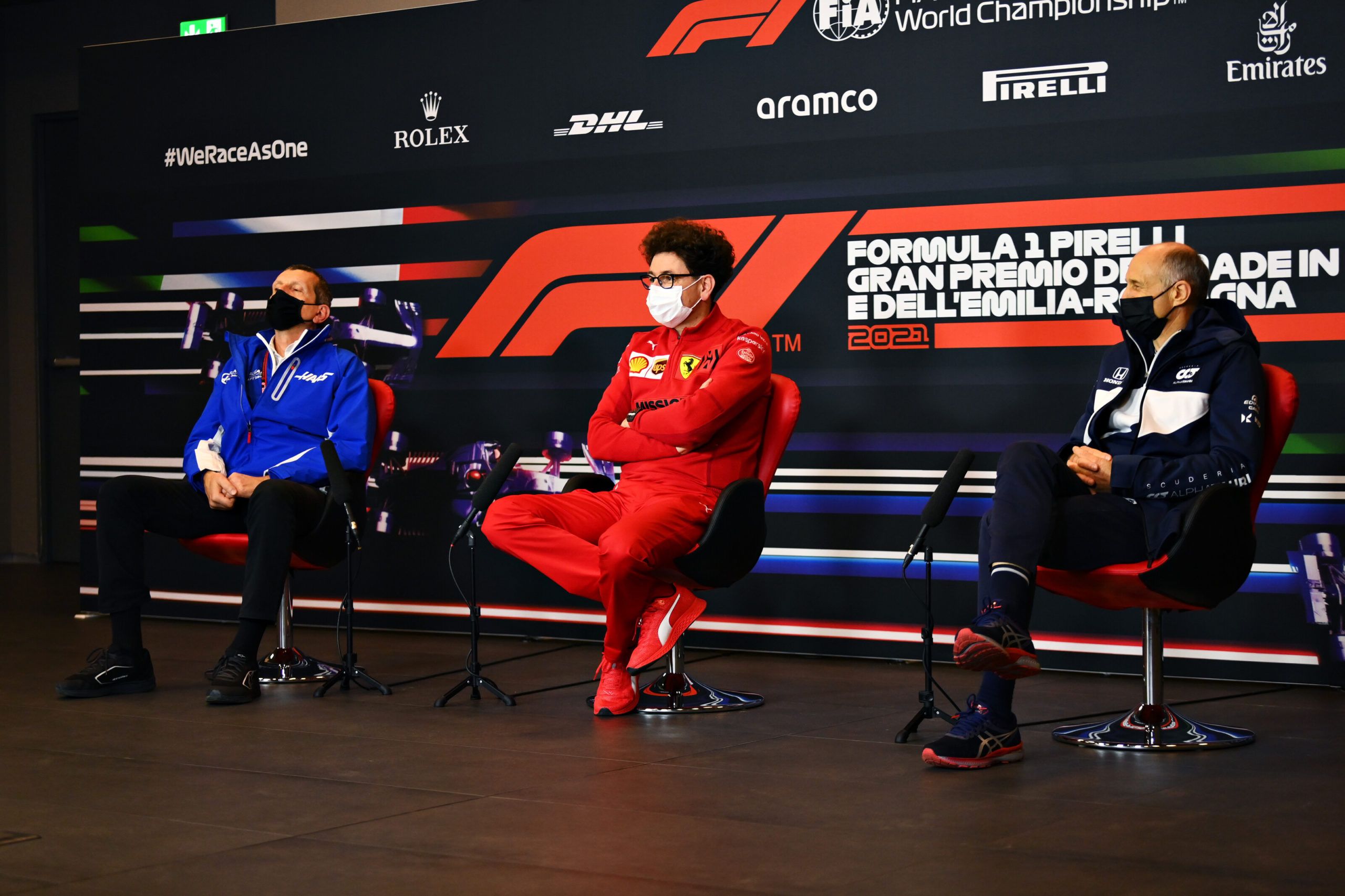F1 was hit by a unique outage during Imola GP FP1 session, which left teams and drivers along with viewers in dark for certain period.
With COVID-19 restrictions in place, F1 has been working remotely at Biggin Hills, together with the local smaller command center. Motorsport Broadcasting reported of trouble at the UK base, but the sport insists, it to be an issue at Imola, which hurt them.
The FP1 session was hit hugely where the coverage of cars on track only started few minutes after the lights went green. Both the TV coverage and F1 TV was affected, especially with no onboard feed, tyre data and even radio communication.
Even camera feed was disrupted as there is no footage available yet of the crash between Sergio Perez and Esteban Ocon. The FP2 session was seemingly smoother after the F1 team worked between the sessions, but smaller problems in coverage persisted still.
F1 hasn’t clarified what exactly was the issue, though. Team bosses were as confused as the viewers, as it presented them with a unique situation of relying hugely on pit boards to convey any messages to their drivers, with radio not 100 percent in sync.
Here’s several of the F1 team bosses on how they handled it:
Mattio Binotto: “Certainly it was a big problem. I don’t know if in all the F1 teams we had the exactly the same problem but for us it was very difficult, especially on Charles, no way of communicating to him, so we aborted the first run and then as well because we had a small issue as I mentioned before. As you said, it’s difficult because you cannot give him advice on cars following so then there can be impeding situations, which are not voluntary at all. It is very difficult for the drivers as well to know who is coming behind. On top of that we are running our race power units let’s say, because the power units are the ones we fit in Bahrain and are used for the entire weekend.
“So obviously if you have any problems you don’t know how to react and how to communicate. So those type of problems are serious. The pit board then was very important and useful. We got our telemetry data and that was certainly the most important, the one we can analyse now from one session to the others. We got our lap times from telemetry and all the analysis, which is required. But to manage real time this morning was certainly difficult and you may start to imagine how it was at the time when the radio was not there.”
Guenther Steiner: “I think a little bit lucky also that nobody had radio communication so everybody was watching out to be honest. I think it’s more difficult if you are the only car out there with issues but everybody had issues so everybody was respecting and it was communicated quite quickly that everybody’s radio was not working so everybody knew that nobody could see so even the people which were behind cars knew that the guy in front of him didn’t get advice so that helped a little bit. But it shows how important it is to have this communication.
“The radio was very… we could hear the F1 driver, but he couldn’t hear is, except in one corner, he could hear us. Then we didn’t have any GPS data in the beginning, we didn’t have any tyre information from the other cars and we didn’t have any timing in the beginning. Some of the timing came back and that was about it. We tried with…. Instead of the radio we used the good old style pit board, we tried to do that one and that’s the only thing you can do.”
Franz Tost: “It was interesting to observe how confused we were because normally you are used to give the driver some advice to tell them, especially at the beginning of the free practice session, what to do and also regarding the traffic. But drivers couldn’t hear us, we couldn’t hear drivers and it was completely a new situation and no one was prepared for this, it’s not so easy and we were lucky that nothing happened.”
Frederic Vasseur: “The experience was a bit strange because we had no lap time… we had the data for safety for sure, at least, but we had no data or information also. But as it was just for the first stint, until mid-session, something like this, it was OK for me, it was not a drama but for sure we are not used to it now. We discussed after the session, because the F1 drivers were complaining about the radio and… OK, but 20 years ago, guys, they were able to drive without radio. No, it’s OK.
Otmar Szafnauer: “Until you lose that kind of data, I don’t think you realise how much you rely on it. It was like we were blind on the pit wall and then, like Fred said, even driver communication wasn’t working. It made things much more difficult. Root cause? I don’t know why it happened.”
Here’s how F1 Imola GP FP1 panned out
Here’s how F1 Imola GP FP2 panned out

